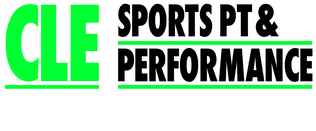This week’s pair of articles are from the Journal of Orthopaedic and Sports Physical Therapy. The first one discusses the effect of posture on a commonly used hip strengthening exercise. The second talks about running gait re-training which is becoming more common in rehab and prevention of running injuries. Enjoy the new knowledge below and contact CLE Sports PT with any questions!
Band Side-Stepping: Training the Right Muscles
Band side-stepping is a favorite exercise of mine- it’s quick, easy, and does a great job of working a very under-trained muscle group, the glute medius. Strengthening of the glutes (gluteus medius and maximus) can lower risk of many injuries in runners, soccer players, and other athletes.
However, doing this exercise wrong, can train the wrong muscle group. It could incorrectly strengthen the tensor fascia latae, or TFL. This could further increase a strength imbalance that many of us already have (weak glutes and strong TFL), therefore increasing risk for injury.
The Journal of Orthopedic and Sports Physical Therapy recently published this study that showed how much proper form matters. Staying in a squat position while sidestepping increases muscle activity of the glutes and decreases muscle activity of the TFL- helping to reverse the strength imbalance.
Incorrect- upright position
Correct- maintain squat throughout exercise to maximize strength gains in the glutes
Want to find out if you are using the right form in your strength training program? Contact CLE Sports PT today. Use the form below
What is Gait Re-Training and How Does it Help Running Injuries?
Five years ago, many people decided that barefoot running was the answer to solving every running injury and improving running performance. Tons of runners (as well as coaches and sports medicine experts) tried to stop heel striking and switched to minimalist shoes. While we quickly learned the error of our ways, we picked up some valuable lessons of paying attention to running form. While no “shotgun” approach will ever work for the general population, running form does matter. And paying attention to an individual’s form could be a major factor in healing an injury, preventing one from happening, or just making a runner better in general.
This recent review from the Journal of Orthopaedic and Sports Physical Therapy looked at the current research we have on running gait (or form) re-training. It concluded that using real-time feedback is effective in reducing impact forces on the body during running.
Specific injuries that could benefit from running gait re-training were also mentioned in the journal:
- Knee pain
- IT Band Syndrome
- Stress fractures
- Compartment syndrome or shin splints
So how does a person retrain their running gait? There’s many different methods, such as:
– Verbal coaching: “Shorten your stride length,” “Run softer,” “Run quietly,” “Take shorter/longer steps”
– Auditory sensors in heel of shoe (sensors make a noise when activated during a faulty stride)
– Using a mirror to watch and correct form in a mirror (mentioned in the article)
– Laser pointer training (the runner attempts to keep a certain position of the laser pointer by maintaining corrected form)
– Video analysis (mentioned in the article)
– Metronome training/ step rate manipulation (see this article or this)
Questions about your running form? Contact CLE Sports PT & Performance today to find out options for video analysis and gait retraining personalized to you- use the form below




You must be logged in to post a comment.